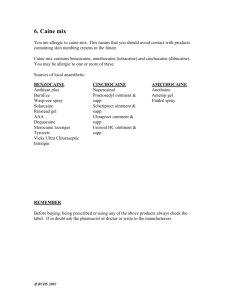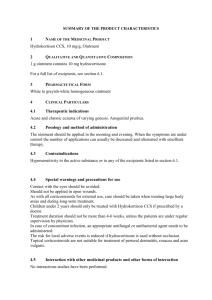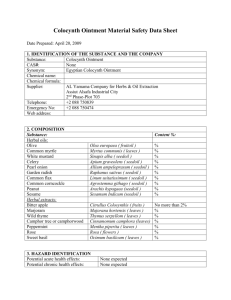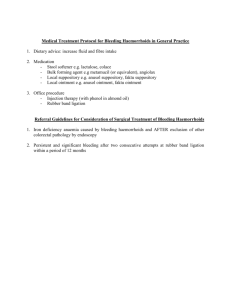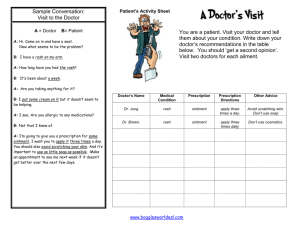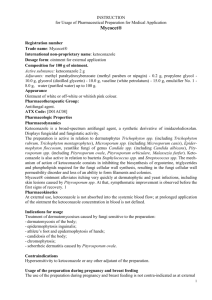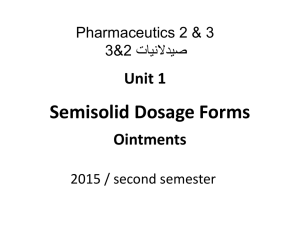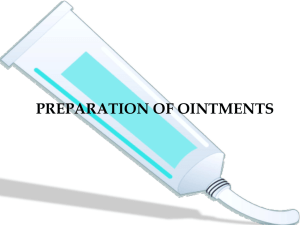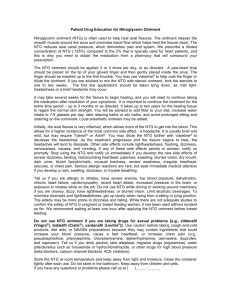Version 7
advertisement
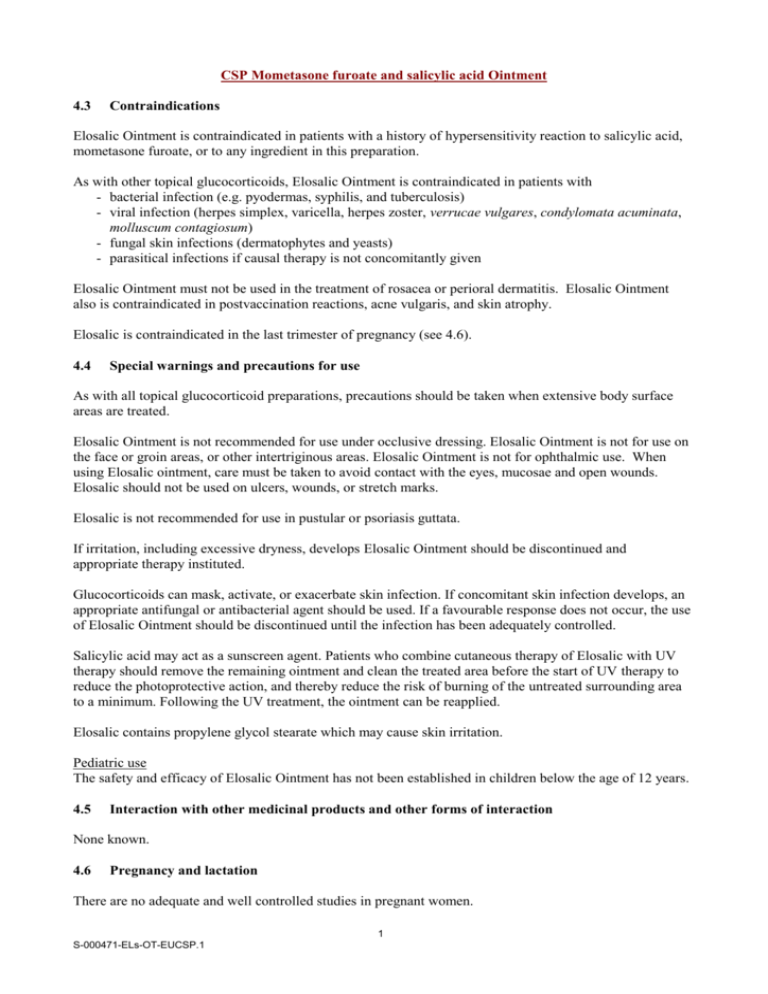
CSP Mometasone furoate and salicylic acid Ointment 4.3 Contraindications Elosalic Ointment is contraindicated in patients with a history of hypersensitivity reaction to salicylic acid, mometasone furoate, or to any ingredient in this preparation. As with other topical glucocorticoids, Elosalic Ointment is contraindicated in patients with - bacterial infection (e.g. pyodermas, syphilis, and tuberculosis) - viral infection (herpes simplex, varicella, herpes zoster, verrucae vulgares, condylomata acuminata, molluscum contagiosum) - fungal skin infections (dermatophytes and yeasts) - parasitical infections if causal therapy is not concomitantly given Elosalic Ointment must not be used in the treatment of rosacea or perioral dermatitis. Elosalic Ointment also is contraindicated in postvaccination reactions, acne vulgaris, and skin atrophy. Elosalic is contraindicated in the last trimester of pregnancy (see 4.6). 4.4 Special warnings and precautions for use As with all topical glucocorticoid preparations, precautions should be taken when extensive body surface areas are treated. Elosalic Ointment is not recommended for use under occlusive dressing. Elosalic Ointment is not for use on the face or groin areas, or other intertriginous areas. Elosalic Ointment is not for ophthalmic use. When using Elosalic ointment, care must be taken to avoid contact with the eyes, mucosae and open wounds. Elosalic should not be used on ulcers, wounds, or stretch marks. Elosalic is not recommended for use in pustular or psoriasis guttata. If irritation, including excessive dryness, develops Elosalic Ointment should be discontinued and appropriate therapy instituted. Glucocorticoids can mask, activate, or exacerbate skin infection. If concomitant skin infection develops, an appropriate antifungal or antibacterial agent should be used. If a favourable response does not occur, the use of Elosalic Ointment should be discontinued until the infection has been adequately controlled. Salicylic acid may act as a sunscreen agent. Patients who combine cutaneous therapy of Elosalic with UV therapy should remove the remaining ointment and clean the treated area before the start of UV therapy to reduce the photoprotective action, and thereby reduce the risk of burning of the untreated surrounding area to a minimum. Following the UV treatment, the ointment can be reapplied. Elosalic contains propylene glycol stearate which may cause skin irritation. Pediatric use The safety and efficacy of Elosalic Ointment has not been established in children below the age of 12 years. 4.5 Interaction with other medicinal products and other forms of interaction None known. 4.6 Pregnancy and lactation There are no adequate and well controlled studies in pregnant women. 1 S-000471-ELs-OT-EUCSP.1 During the first and second trimester: The safety of Elosalic in pregnant women has not been established. Therefore, the use of Elosalic during the first and second trimester of pregnancy should be avoided unless the potential benefit justifies the potential risk to the fetus. During the third trimester: During the third trimester of pregnancy, all prostaglandin synthetase inhibitors including salicylic acid may induce cardiopulmonary and renal toxicity in the fetus. At the end of the pregnancy, prolonged bleeding time in both mother and child may occur. Therefore, Elosalic is contraindicated during the last trimester of pregnancy (see 4.3). It is not known whether topical administration of corticosteroids or salicylic acid could result in sufficient systemic absorption to produce detectable quantities in human milk. Because many drugs are excreted in human milk, caution should be exercised when Elosalic Ointment is administered to nursing women. 4.7 Effects on ability to drive and use machines Not relevant. 4.8 Undesirable effects Adverse reactions that have been reported with the use of cutaneous corticosteroids include: Table 1: Treatment-related adverse reactions reported by body system and frequency Very common (≥1/10); common (≥1/100, <1/10); uncommon (≥1/1,000, <1/100); rare (≥1/10,000, <1/1,000); very rare (<1/10 000, including isolated reports) Endocrine disorders Rare: Skin and subcutaneous tissue disorders Common: Uncommon: Adrenal suppression. Pruritus, local skin atrophy Skin striae, rosacea like dermatitis, ecchymosis, folliculitis Rare: Hypertrichosis, skin hypopigmentation Unknown: Skin irritation, skin maceration, dry skin, dermatitis acneiform, dermatitis, dermatitis contact, skin exfoliation, telangiectasia, miliaria General disorders and administration site conditions Common: Application site burning sensation Infections and infestations Uncommon: Infection Immune system disorders: Rare Hypersensitivity 4.9 Overdose 2 S-000471-ELs-OT-EUCSP.1 Excessive, prolonged use of topical corticosteroids can suppress the hypothalamic-pituitary-adrenal (HPA) function, resulting in secondary adrenal insufficiency. If HPA axis suppression is noted, an attempt should be made to withdraw the drug or reduce the frequency of application. 3 S-000471-ELs-OT-EUCSP.1
